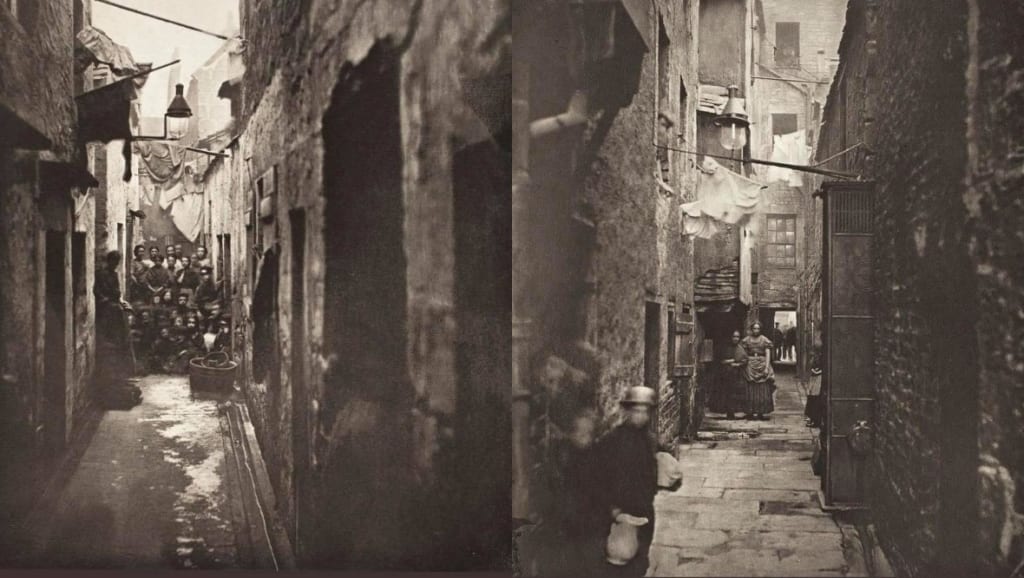
Amazing but haunting images of Glasgow slums in the Victorian era of 1863 show the birth of the city as we know it today.
The images are believed to be the oldest “live action” pictures ever taken of people in Glasgow - and in many ways they literally show the birth of the city and its many cultures, traditions and statistics that we have lived with ever since.
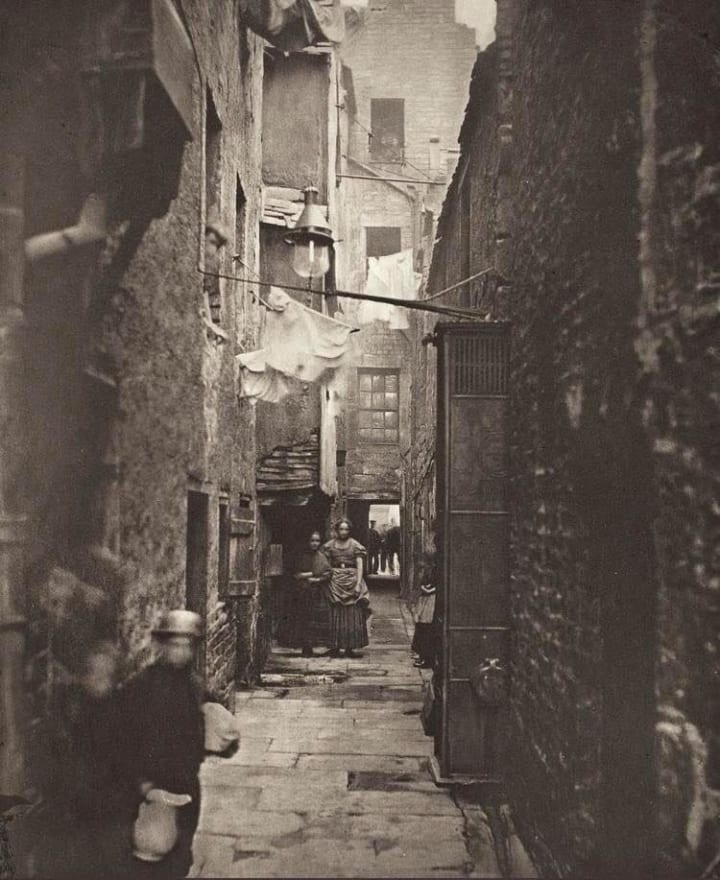
In 1863 Glasgow was the most densely populated and poverty stricken area in the UK despite also being the second city of the empire and being host to some of the worlds richest men in the tobacco lords, plantation owners and slave traders etc.
The normal Glaswegians were nothing more than peasants to their rich and powerful overlords - working for literally pennies to make their masters (billionaires by today’s standards) even richer.
In turn Glasgow became the most unequal city in the UK outside London- with both the richest and poorest population outside the capital.
Still to this day that “most unequal” statistic remains true in Greater Glasgow and is highlighted most starkly by the difference in age expectancy between north Glasgow (61 for men) and neighbouring East Dunbartonshire (94 for females).
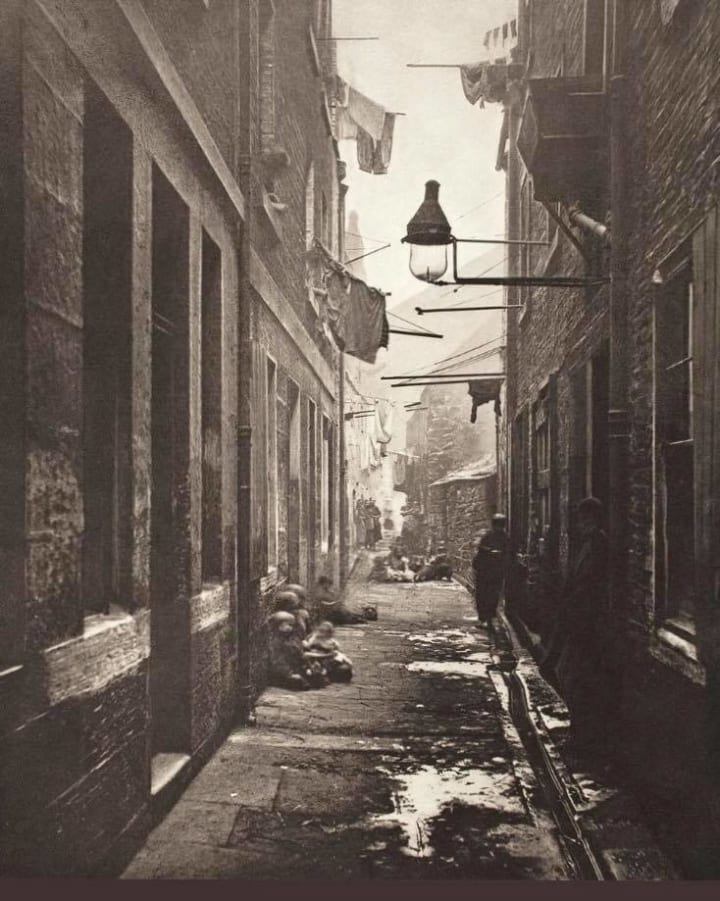
Many thousands had been recently forcibly moved from their homes in both the Highland clearances which occurred in the Scottish Highlands between 1793-1855, and the Irish Gorta Mor “great famine” which took place in Ireland between 1845-1858.
Of the many people displaced by the two incidents, (both a result of British establishment greed), some would end up in Australia, others in New York, many more in Liverpool and Manchester and all over the UK, but no city in the world attracted more newcomers at the time than Glasgow.
Between 1790 and 1860 thousands of Scottish Highlanders, banished from their homes when landowners decided livestock would be a more valuable use of the space, and thousands of Irish, forced to flee their country during a famine, turned up in Glasgow.
And most of them turned up without a “pot to p*ss in”, a saying which is still used in Glasgow and originated during this time.
It was first used to describe people who literally never have a pot to p*ss in.
In the overcrowded streets of Glasgow is was common for people without a toilet (the vast majority of the population) to pee in pots and dispose of it from there, but those even poorer never had a pot so just had to pee from their windows or in the street so people would say “look at that the poor bugger doesn’t even have a pot to p*ss in”.
With so many new people being squeezed into the slums from completely different cultures, a large percentage of both being non-English speakers, it didn't take long before a lot of friction and resentment built up between the two new communities. of mostly devout Catholic Irish immigrants and staunchly Protestant incomers from the Highlands, and the already impoverished locals.
A resentment that was festered by the rich and powerful through media reports and propaganda campaigns to keep their own interests sweet by stirring the Catholic/Protestant, Irish/Scot, Glaswegian/outsider pot and keeping their own deeds out of the limelight.
The resentment that built up during this time is still prevalent among many communities and religions (and they would even soon have a couple of shiny new football teams to help to held forge that identity and rivalry).
The animosity soon brought violence, which in turn brought about the spread of gangs protecting their own areas, slums and “schemes” and the first young teams were born.
This again would embed itself into the culture of Glasgow that we know today with outbursts of gang violence among young men and teenager being a common theme every few generations since the late 1800s.
For two spells, between 1987-1991 and 2002-2007, Glasgow was officially the murder capital of Europe with gang affiliation being a common theme among so many of the deaths.
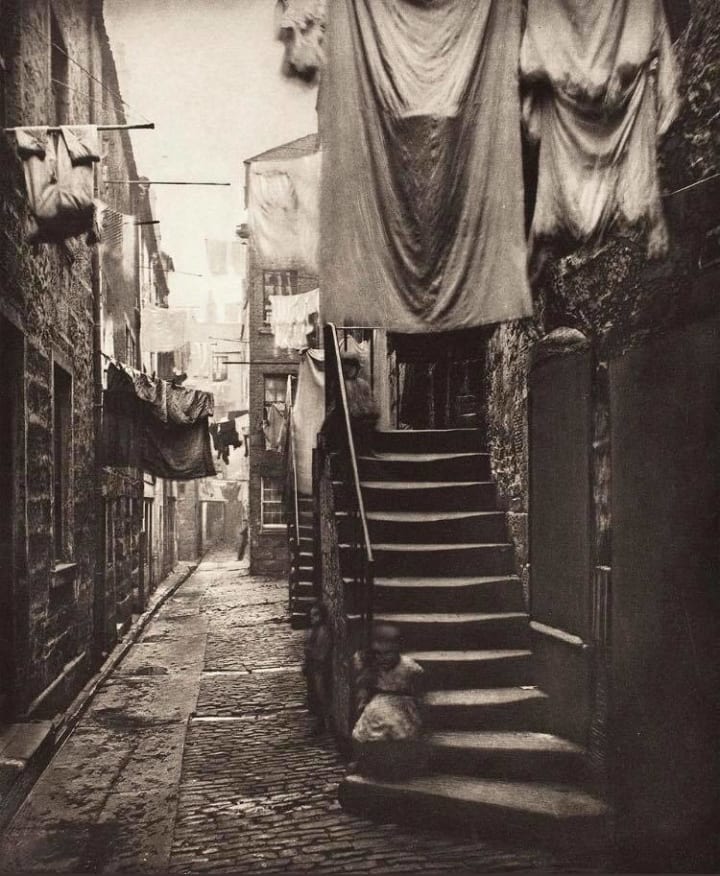
Meanwhile the rich continued to turn the poor against each other and reap the rewards.
They blamed immigrants for the low wages that they themselves were paying, rumours were spread that the Irish were dirty, never washed, carried disease, were thieves, alcoholics and trouble makers who loved to fight.
They were also accused of spreading disease through their love of casual sex with many partners.
The earliest record of prostitutes and sex workers being prevalent in the city go back to 1869 and it is believed most came from the Irish community.
So exaggerated stories of the drunken sex and debauchery exploits of the Irish shocked the more conservative and tea-total Presbyterian community and the divide was widened ever more.
Meanwhile stories were spread among the Irish that the strictly Christian Highlanders were all inbred, uneducated and useless backward oafs who were religious fundamentalists who hated anyone different from them and married their 12-year-old and 13-yea-old cousins.
Divide and conquer was used perfectly to control the masses - something we are still feeling the affects of today when no matter the issue it will eventually be played out as a “Celtic vs Rangers” “Catholic vs Protestant” “loyalist vs republican” “unionist vs nationalist” debate and it most commonly used to dilutes the real issues at hand that may be uncomfortable for the people profiting from it.
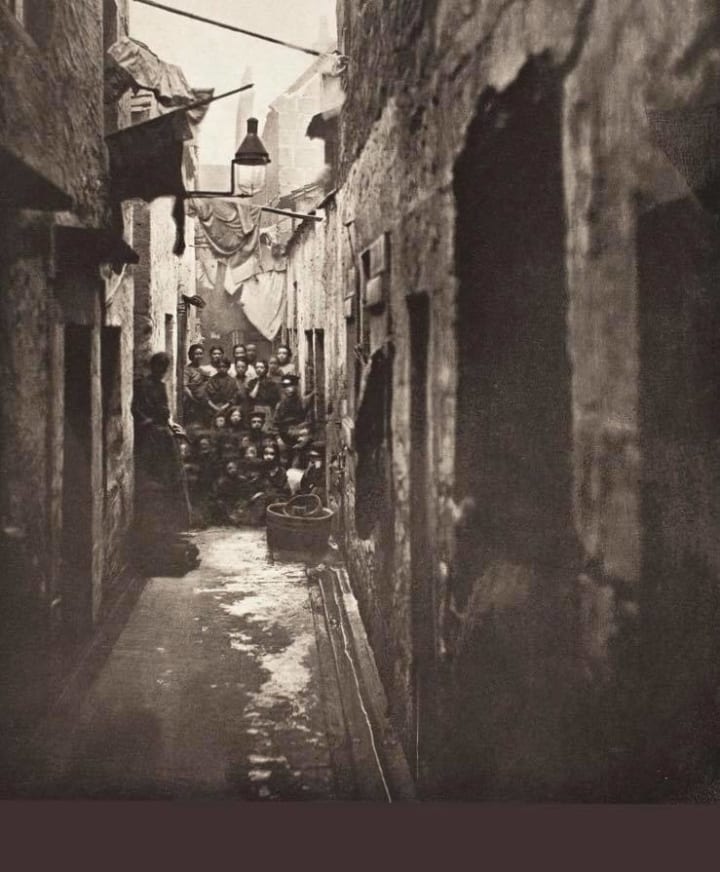
Another lasting legacy that Glaswegians are still living with to this day is the classist structure to the city that brought about generations of health issues.
When the industrial revolution was its height, factories were popping up all over the city and with them came levels of smoke and pollution and significantly impacted anyone living amongst it.
So, as was the way of the time, all the poorest people were moved to the east end of the newly built city because that’s the way the smoke from factories would blow.
The east end quickly became dirty, overcrowded and toxicly unhealthy place to live and causing the life expectancy levels in the city to fall to the worst in the developed world - something from which it has never recovered from...
In 2007 Calton, in the east end, not only had the lowest life expectancy for men in the UK but at 53 was lower than Iraq, Afghanistan and Palestine all while they were literal war zones.
Still to this day the poorest and unhealthiest communities in the UK are in the east end of Glasgow
It was during this time the Irish also brought a pubs and alcohol culture to the city and everlasting reputation as a hard drinking nation that came with it.
The mostly strictly Protestant country was very conservative and anti-alcohol before then.
The city has been mad about the booze ever since and it wasn't long until its next big obsession was born.
When Celtic was formed in the east end by an Irish priest in 1887 to rival Rangers founded in the south a decade earlier our obsession with football began.
After the very first game between the pair (Celtic’s first ever game) in 1888 the Glasgow Herald remarked that they were like a pair of “Old Firm friends” and the name Old Firm lasted (even if the friendship never) to this day.
These ghostly images are particularly haunting from a time that has basically defined our city and life for the last 160 years and they make you just wish you could bring the scene to life- see the colour, hear the accents, hear the banter and the language - see how similar or how different they were to us.
But there can be no mistake that these pictures from photographer Thomas Annan capture the birth of a city as we know it today.





Comments
There are no comments for this story
Be the first to respond and start the conversation.